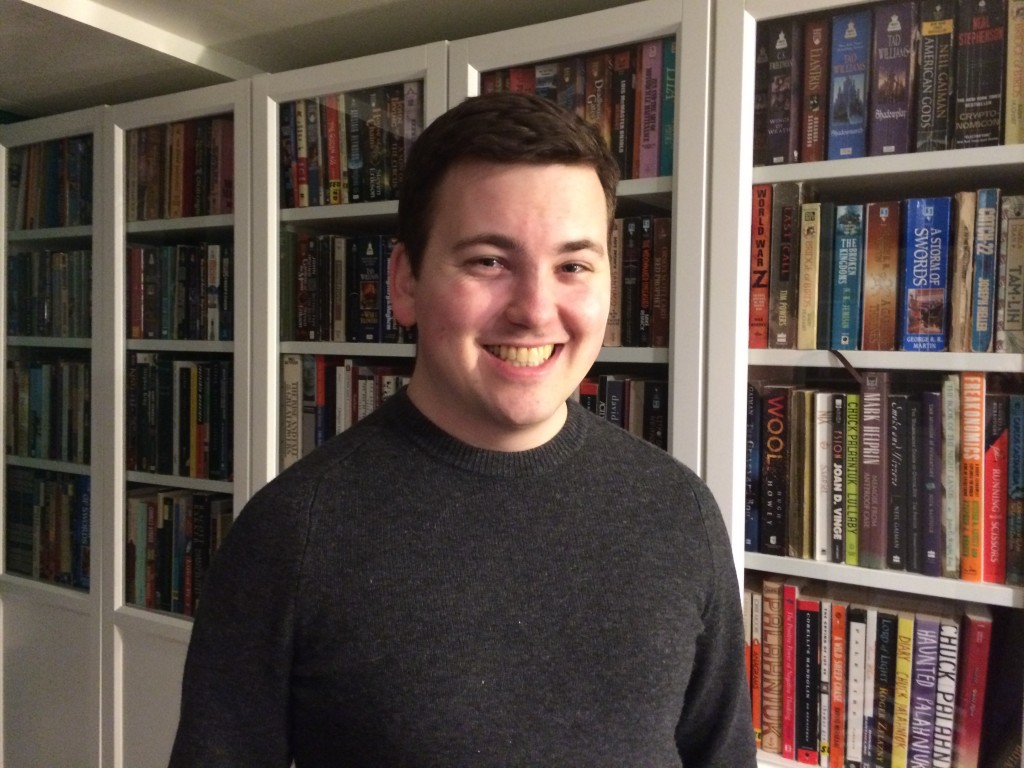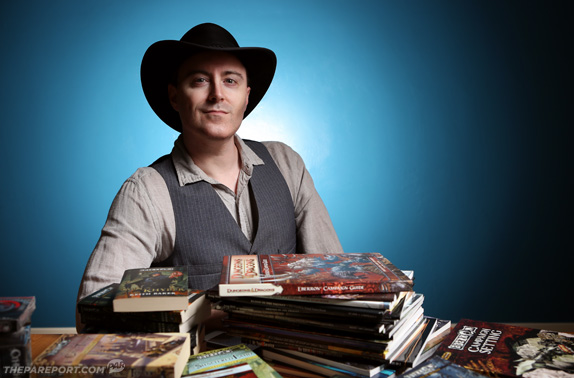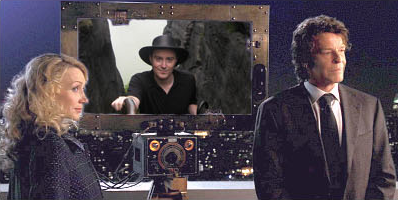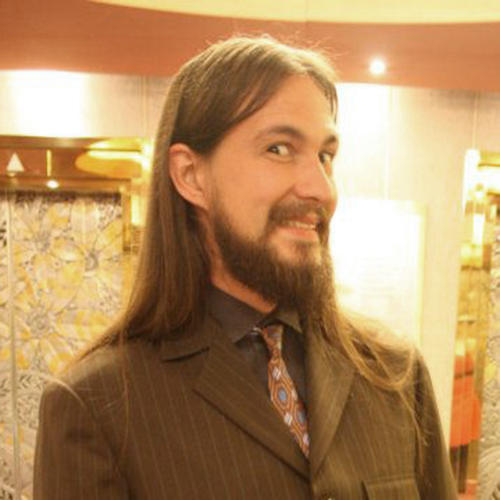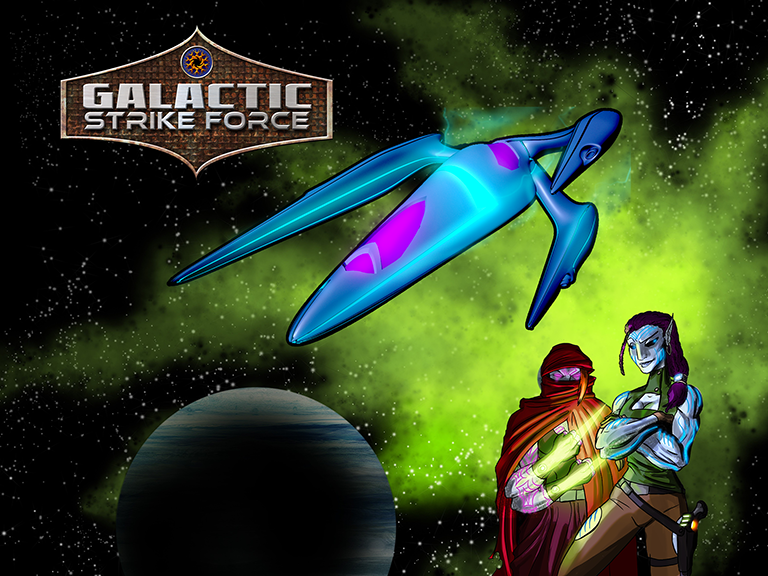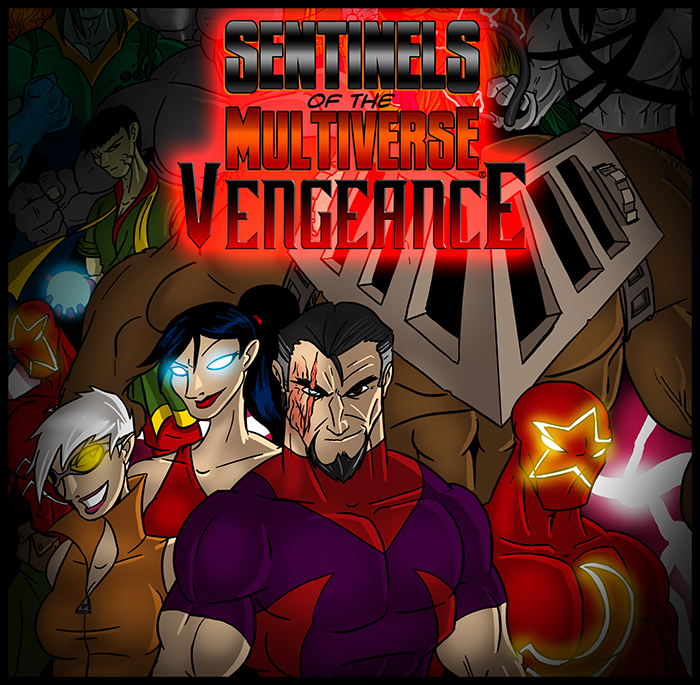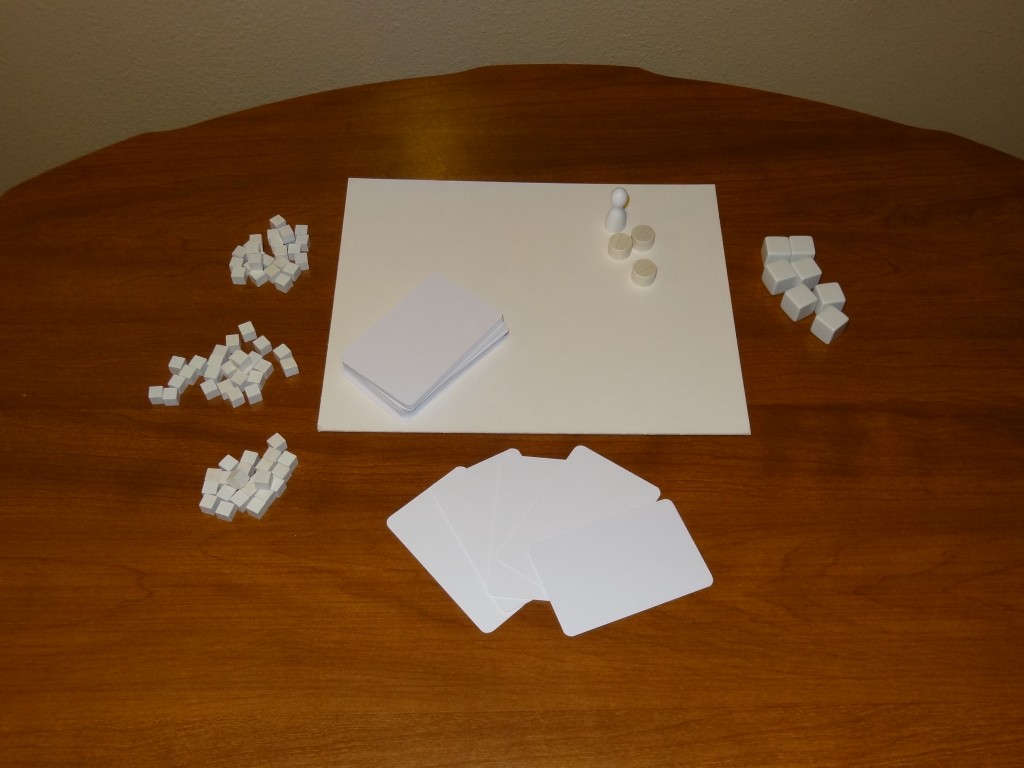I first met Daniel Garrison in 2011. He’s a brilliant designer and one of the finest game masters I’ve played with. In 2013 we began working on an RPG project together, which ultimately evolved into Phoenix Dawn Command. But just who IS Daniel Garrison?
Phoenix: Dawn Command is your first foray into the gaming industry. But where does the Dan Garrison story begin? Who are you, and how did you fall into the sordid world of roleplaying games?
But in the stories our games are supposed to emulate, sometimes protagonists die. It’s usually one of the most powerful moments for that character, where their lives and their meaning is redefined in the moment of death. I think about Boromir in the Lord of the Rings – until he dies, he’s just the jerk who betrays the Fellowship and is corrupted by the Ring. When he dies, he shows how brave and loyal he is, that he’s regretted coveting the Ring, and he saves his friends from certain death. Dramatically, we weigh that scene more heavily than everything we know about Boromir that came before.
I experienced that personally in a game with Keith’s character Summer, in a long term Exalted game I ran – Keith was moving out-of-state and we knew that we had to give his character an exit, and we orchestrated a death that was dramatic, timely and that left this huge legacy that affected all of the other players and the world of the game. It was awesome. And I found myself thinking, as a GM, how do I encourage more of that?
The answer that I came to that became Phoenix: Dawn Command seemed ridiculous at first and then obvious. Take the ultimate catnip for your players – leveling up and becoming more powerful – and marry it to dying. They’ll be lining up to make noble sacrifices and high-stakes risky gambits and last-gasp monologues. And playing a Phoenix, you will, and it’s great.
If you were going to be stuck in a remote arctic colony with only three roleplaying games – other than ones you’ve designed – what would they be?
Oh wow, this is an incredibly difficult question, but a few stand out:
Nobilis (Jenna Moran, Hogshead Press edition) – Nobilis, when it came out, looked nothing like other gaming products. It’s this beautiful white coffee table book that doesn’t fit on your gaming shelf, with fantastic art and layout. It wasn’t the first RPG to completely abandon dice, but it was one of the first, and that was just one of rules of game mechanics it totally broke. It’s a hard game for me to run, not because of the mechanics, but because I set the bar too high, wanting a campaign that’s as beautiful and moving and disturbing and weird as what I read in the book. Every other page or so has these microfictions – short stories between a sentence and two paragraphs – that are incredible. There’s so much inspiration here.
Apocalypse World (Vincent Baker) – Vincent Baker’s two games he’s most known for, Apocalypse World and Dogs in the Vineyard, are both so good, but AW in particular completely turned the way I think about game design on its head. With traditional RPGs, we caution against railroading your PCs but we also encourage it – you need to have a plot, after all. We depend on the GM for the narrative but we also resent them for limiting our characters’ agency, by forcing us to follow that narrative. AW and my favorite of its spiritual successors, Monsterhearts, control the GM’s agency and force them into being responsive to player actions. The scene grows organically and the narrative control is shared as players choose their own consequences. It’s funny as a GM to admire a game where GMs are more limited in what they can do, but it’s awesome – the story goes places you would never come up with on your own, while still feeling natural and dramatically satisfying.
Exalted (White Wolf) – Exalted is an epic martial-arts fantasy setting that combines extremely powerful PCs with a kitchen sink of every sort of fantasy and anime and mythic trope you can imagine – God-kings! Ninjas! Vampires! Dinosaurs! Fair Folk! Robots! When they weighed whether “does this makes cohesive sense” vs. “is this awesome” they just hit the “awesome” button a hundred times. The mechanics are just as wild. Game balance? Whatever. You can basically be invincible with some starting character builds. I love this! Nobody else figures out what the stakes are for the guy who can’t die. I watched a PC parry the moon. The freakin’ moon. Not a scratch. Later on there’s martial arts that turn you into a 4-dimensional being or that create infinite copies of your character or that turn the guy you touch (that invincible guy that can’t die) into an unloved goldfish. How’s them apples? Now, does this present opportunities to break your game? Yes. But Exalted is the sportscar that goes up to 1,000 miles per hour but is only safety-tested up to 100. You can go the speed limit and you’ll be fine. But you’ll be tempted to see how fast it goes. You’re probably okay up to around 300 mph. The resulting crash and explosion is very entertaining.
While Phoenix is the first game you’ve worked on professionally, you’ve created a number of interesting systems and settings in your home campaigns. What are a few of your favorites?
Well, for setting, there was the Exalted game in which we met – Academy of Keys. Exalted usually operates at a demi-god level of power, but the PCs started as mortals, washed up naked on the shores of the Academy, a school/prison for the various types of Exalted. Think Hogwarts, but you can’t leave, and “Defense from the Dark Arts” class is actually “Defense from Your Monstrous Classmates.” The PCs, still human, slowly worked their way up from the bottom of the Academy and became Exalted in the process, eventually meeting and exceeding the power level of their most terrible enemies. There were all these teams of classmates, NPCs who the player characters could interact with, through combat and dueling but also through politics and partying and dating around. There was a baccarat tournament that we invented a new card game for! There was a cooking contest, and storytelling to the death, and a battle of the bands. And lots of murder, and they save the world and crown a new Empress and all that. Just the best sort of sandbox setting, and all the players and my assistant GM contributed so much extra material; I’ve never felt so spoiled as a GM.
For systems, two come to mind. The first, Saints and Devils, was a diceless convention game in a supernatural Western setting. The PCs are these agents of divine justice, but they’re paired up: Saints are these righteous gunslingers who judge the wicked, but they’re each spiritually connected with a Devil, these tricky con men with magical abilities to trick and tempt people but who are forbidden from handling weapons. If either the Saint or Devil dies, their partner dies too, so even if the Saint and Devil don’t see eye to eye they have to watch out for each other. And different Saints can have different ideas of justice: some are forgiving, some want to hang ’em high; the Devils tend to just want to have fun and get away with stuff.
The other system I’d like to mention, Swords and Cups, was my first foray into using cards for conflict resolution in games instead of dice. Inspired by Tim Powers’Last Call, each player has their own deck of tarot cards that they use to represent their character. By making tarot spreads, the PCs could bend or change fate to their advantage depending on the suits they were strong in. Although it went through many iterations, and changed genre a couple times, some of this system became the core of the card resolution mechanic we use in Phoenix: Dawn Command. There’s a lot I like about these systems, and I could see revisiting them again in the future.
What’s your favorite aspect of Phoenix: Dawn Command?
Well, there are a lot of system things that I’m impressed and excited by when I see them in play – the death and rebirth system, the deck-building component – but one thing I want to call out is Traits. Playtesters have done so much with these and I’m always surprised and pleased by what they come up with. We thought a lot about ways that we could give mechanical advantages to people who play their characters well, showing off their character’s style and personality. As a result, we added Traits: they are action cards in your deck, but in addition to have a regular value (“1 Strength”) they have a descriptor that tells us something about your character (“Reckless”). You can just use it as a Strength card, but you could also use Reckless in any kind of spread where you make it work – “I’m tired of these trade negotiations and I kick the table over!” in a social situation, for example. They also have a special ability on them, too – maybe Reckless gives you an extra attack if you’re willing to neglect your defense. Players are never forced to use Traits, but they’re satisfying and a significant bonus, and it really helps define the player characters and differentiate them from each other.
What do you consider to be your greatest accomplishment as a game master?
It’s hard to think of these things on a large scale because gaming, to me, is so collaborative. I love creating and facilitating these moments for my players, but I don’t usually think of my own – I think of their characters’ most dramatic moments and love hearing about them. That said, I can remember a little one. I ran a Call of Cthulhu one-shot that was pretty outside my normal comfort zone. The characters were investigating this shuttered asylum, and I had a whole bunch of photographs from an artist who explores abandoned locations – with each room they explored I’d give them another creepy, horrible picture of where they were. Rusted medical equipment and disturbing graffiti and wreckage and shadows everywhere. They knew something bad was here and the sense of tension was incredible. In the end, the characters never even got a look at what was living in the asylum – the mood was so intense that once something was chasing them, the characters ran for the car and were happy to escape with their lives. It really stuck with me because that was a game that was almost entirely descriptive, without any combat or social interaction or dice rolling or referencing a character sheet – all the tools I usually rely on. I think it just goes to show how expansive and varied our hobby can be, how it really can encompass anything you can imagine with collaborative storytelling.
Phoenix: Dawn Command will be funding on Kickstarter in April 2015. If you’d like more information, sign up for our mailing list here!

